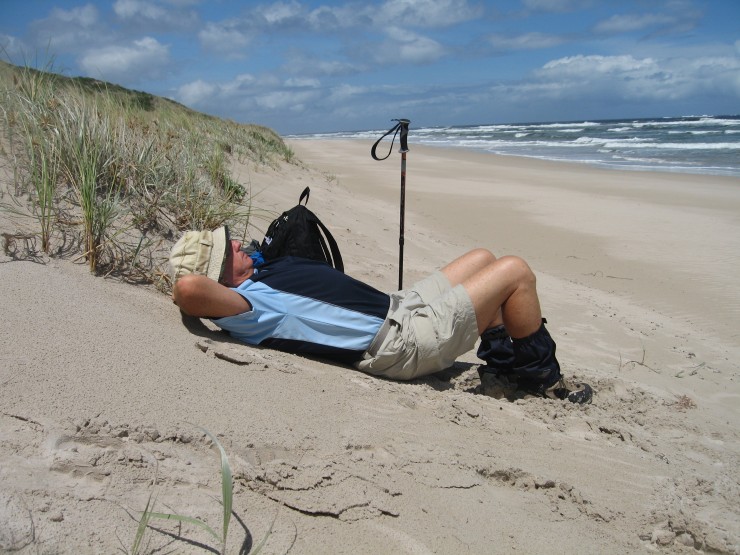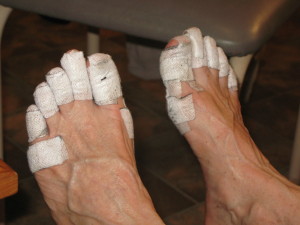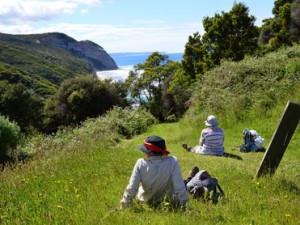How to prevent blisters for stress free hiking

How to prevent blisters for stress free hiking
Posted on
Blisters are no fun. If there was a Worlds Most Annoying Injury award, they would eclipse the “overly trimmed fingernails” and “sun burnt forehead”.
More than being annoying, blisters can be debilitating on a long walk. It really pays to prevent them as it is really hard to appreciate a sun set or a spider orchid when it feel like you have hot poker in your shoe.
Your feet are close to our hearts, so we have decided to write our definitive guide on how to prevent blisters when hiking. I hope you enjoy.
Prevent Blisters when Hiking
1. Get boots a half size bigger than your usual size
We have had a bit to say on How to Choose Hiking Boots before. Fit is everything. We recommend going that half size bigger and then wearing either two pairs of socks (more to say on that later) or nice thick socks. The reason? Feet swell. They may feel snug after a kilometre, but what about 10km? Or 20km?
2. Get some fixomull
On the seventh day god didn’t rest!!! He had made fixomull for the benefit of all us walkers. Pity he couldn’t have made it a little cheaper, but it is worth every dollar. Fixomull is an adhesive tape which lets moisture out but not in. Originally developed for burns it is used all over the world by blister aware walkers. We recommend taping up your known hotspots. For most people this is the heal, the big and the little toes. Do this before every hike of decent length. As you walk if you start to feel a “hotspot” stop and put some fixomull on immediately. It will prevent a blister if you get in early.

You don’t have to go to the extent of one of our walkers whose identify will be kept secret (until we need to blackmail her), but she got the idea!
Fixomull is available from every pharmacy. They may sell you a different brand (which is generally okay) however the genuine stuff is the best.
3. Wear two pairs of socks
Why? If something is going to rub, then it is better the two socks rub together rather than something biological rubbing. This works. We would recommend a thin pair of socks on the inside with a thicker “explorer” type sock over the top.
Another tip relating to socks is if there is a chance your feet will get wet, then bring a spare pair/s of socks so you can change them out half way through the day. Don’t forget a plastic bag for the wet ones!
4. Rest and Elevate
 As I said before your feet will swell as you walk and this can cause your boots to rub in unusual places… like your patience! The quickest way to reduce this swelling is to take your boots off, lay down and elevate your feet. If you are doing a full day’s walk then we recommend getting the shoes off at lunch and getting them up in the air resting on your back pack. This will not only energise you for a wonderful afternoon, but it will put the feet back in shape and have you feeling great.
As I said before your feet will swell as you walk and this can cause your boots to rub in unusual places… like your patience! The quickest way to reduce this swelling is to take your boots off, lay down and elevate your feet. If you are doing a full day’s walk then we recommend getting the shoes off at lunch and getting them up in the air resting on your back pack. This will not only energise you for a wonderful afternoon, but it will put the feet back in shape and have you feeling great.
Bonus tip: If you are anywhere near water, an ankle deep paddle at the end of the day’s walk will reduce swelling really quick. Definitely recommended!
5. Keep sand out
Sand causes blisters faster than a speeding hiker! You need to keep it out of your boots and your socks. The best way to do this is little ankle gaiters. More on that in our guide on what to wear when hiking.
6. Plug the gaps with hikers wool
Do you want to know why god spent his rest day making fixomull? It is because he knew that shoe makers would never be able to account for every individual foot shape. Some times you just need to stuff something into your boots and fill the space… and the stuff is Hikerswool. Hikerswool is ultra fine, high quality wool that you can put into your sock at any point of friction. It acts like a little wooly cushion and due to the high oil content it retains its spring…. so you can keep a spring in your step!
So there you have it, our guide to how to prevent blisters. Remember that prevention is key. Once you have a blister only time will heal it.



